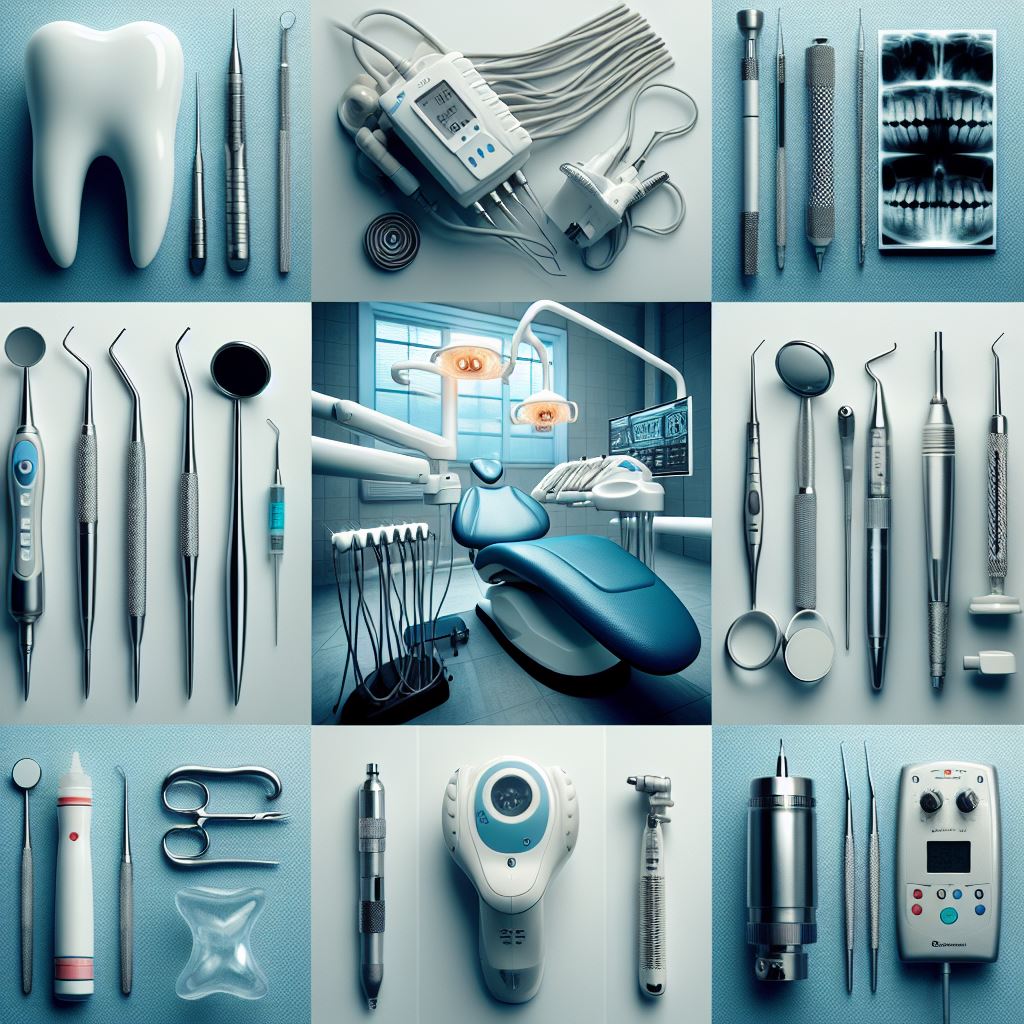Introduction
When’s the last time you looked forward to going to the dentist? For many of us, the thought of reclining in the dental chair as someone pokes and prods our mouths doesn’t exactly spark joy. But behind the masks and protective eyewear, dentists are regular people with some fascinating stories to tell. In fact, the world of dentistry is filled with curious tales and trivia that might just make you smile the next time you’re at an appointment.
In the following article, we’ll explore some amusing and surprising fun facts about dentists that reveal the lesser-known side of these tooth healers. You’ll discover quirky dental history, enjoy entertaining pop culture references, and learn some unexpected tidbits that illuminate what life is like for dentists. We’ll also highlight inspirational dentists who made a difference and share funny jokes that prove dentistry can be filled with laughs.
Dentists have a reputation for being serious, intense people—but the reality is they deal with sensitive human issues and must have a gentle, personable nature. Through learning some fun facts about dentists, our appreciation for their skills and compassion grows. Beyond cleanings and fillings, they provide social, emotional, and often transformative care.
We’ll discover how the practice emerged centuries ago and evolved over time into the modern profession it is today. You’ll gain insights into the challenging dental school curriculum these professionals complete to gain extensive medical knowledge. Additionally, we’ll demystify some common dental procedures to understand what really happens from a dentist’s perspective.
From the first dental texts published in 1530 to accidental inventions that changed dental technology forever, dentistry has a vibrant history. By peering behind the scenes into the daily routines of dentists’ work lives, popular culture portrayals, and real-world human impacts, our respect deepens for their dedication. Although dentistry can appear mundane or induce anxiety, it’s truly a fascinating world filled with heartwarming stories.
So grab your toothbrush and let’s dive into some fun facts that will forever change how you think about dentists! You may just crack a smile the next time you hear, “Say ahh!
![Amazing Fun Facts About Dentists You Never Knew [Top 15 Need-to-Know Tips]](https://factnight.com/wp-content/uploads/2023/11/Amazing-Fun-Facts-About-Dentists.jpeg)
History & Education
The profession of dentistry has an extensive, fascinating history spanning thousands of years. From ancient origins to modern advances, dentists have made incredible progress improving oral health.
Dentistry dates back to 2600 BC, when the first-known reference to dental treatment appeared in an Egyptian text. However, archeological evidence reveals dentistry existed even earlier. In the Indus Valley civilization circa 7000 BC, scientists discovered drilled molar teeth indicating advanced dentistry.
Across antiquity, treatment focused on pain relief and basic extractions. However, in 1530, the first dental textbook published in German ushered in a new era. The Little Medicinal Book for All Kinds of Diseases and Infirmities of the Teeth provided anatomy details, oral surgery instructions, and tooth restoration techniques.
Over the 17th and 18th centuries, dentistry evolved from barbers and blacksmiths filing teeth to professionals studying oral health. France pioneered advanced dentistry, establishing the world’s first dental school in 1699. During the late 1700s, modern tooth extraction tools emerged, followed by the first specialized dental chair invented in 1848.
In the 20th century, technology and education transformed dentistry into the modern profession. Electric drills, x-rays, plastics, and fluoride established the foundation of contemporary dental care. And universities created rigorous dental programs, elevating the expertise of practitioners.
Today dentists complete an intense educational curriculum before licensure. After a bachelor’s degree, aspiring dentists obtain a DDS or DMD degree, requiring at least three years of postgraduate classroom and clinical training. They study an extensive range of topics from microbiology to radiology.
After graduation, dentists must pass written and practical national and state board licensing exams demonstrating skills and knowledge. Additionally, they may pursue specialty training through advanced programs in areas like orthodontics or oral surgery.
Through this evolving and increasingly advanced education, today’s dentists are highly skilled medical professionals we entrust with our precious smiles.

Daily Routine & Common Procedures
What does a day in the life of a dentist look like? Beyond the white coat and face mask, their routines may surprise you.
A dentist’s schedule is filled with a mix of regular care and unexpected challenges. No two days are ever the same! When arriving at the dental office, dentists begin preparations for the stream of scheduled patients. They sterilize instruments, restock supplies, review patient records, and coordinate with dental hygienists. Then it’s time to welcome the first appointment.
Exams are a standard procedure allowing dentists to assess oral health. Using small mirrors, dentists examine teeth, gums, tongues and other tissues looking for problems. They also evaluate prior dental work. This routine yet crucial process aids preventive care and early issue detection.
Cleanings help remove built-up plaque and tartar from teeth. Hygienists scale and polish each tooth to remove bacteria and stains. For patients, a good cleaning provides that just-left-the-dentist fresh and clean feeling!
Fillings treat cavities compromising the structure of teeth. Dentists remove decayed material and “fill” the space with metal amalgam or tooth-colored resin materials. The goal is preventing further decay and restoring form and function.
Extractions involve removing problem teeth that are damaged, badly decayed, or impacted. Using specialized tools, dentists are trained to remove teeth swiftly and safely in a procedure patients are often anxious about.
Root canals tackle deep infections affecting the soft pulp inside a tooth. After removing the pulp and decay, dentists fill and seal the remaining root canal space to protect it.
From whitenings to appliances like mouthguards, dentists have a highly varied workload. Each day brings a mix of planned treatments and unexpected issues. Their technical skills and calm manner keep patients at ease through any procedure.
Whether performing a routine cleaning or an intense surgery, dentists approach their daily responsibilities with care and compassion. Their ability to juggle different tasks and solve dental mysteries makes their job endlessly interesting.

Office Life
What really goes on behind the scenes when you’re not sitting in the reclined dental chair? A peek into the daily office life of dentists reveals a bustling, high-tech workspace.
Stepping into a dental office, you’re greeted with sights and sounds most patients don’t get to witness. At reception, staff schedule appointments, handle billing, verify insurance coverage, and assist anxious or in-pain patients. The waiting area fills with the chatter of patients awaiting checkups or procedures.
Behind the exam room doors, dentists and assistants prepare for appointments. They sterilize tools using high-heat autoclaves and arrange instrument trays with specialized picks, mirrors, and scalers. Walls display brightly lit x-rays showing teeth roots and bone structures. Cabinet drawers contain a rainbow array of dental materials for fillings and impressions.
Today’s offices leverage advanced technologies like digital x-rays, 3D imaging scanners, laser treatments, and CAD/CAM equipment for custom dental work. Computers help dentists access patient records, send prescription orders, and plan procedures using digital treatment simulations.
When patients arrive, they don comfortable reclining dental chairs. Assistants drape bibs to protect clothing from water spray or falling debris during procedures. Adjustable overhead lights illuminate mouth interiors as dentists examine teeth using small mirrors. Tiny suction tubes remove saliva and rinse water during cleanings or treatments.
Between patients, dentists sterilize tools and disinfect work areas to maintain strict hygiene standards. They may consult with dental lab technicians on custom appliance designs or interact with staff on administrative tasks. Patient scheduling requires meticulous coordination to allow sufficient time for procedures.
While the controlled chaos of tight schedules and meticulous sanitizing continues around them, dentists focus their attention fully on one patient at a time. Their goal is providing personalized care with clinical precision and a gentle human touch.
Life in a dental office is filled with a blend of people skills, medical knowledge, and technical abilities. From conversing comfortably with anxious patients to expertly handling complex tools, dentists must excel in many areas—all while keeping their workspace spotlessly clean! It takes a special kind of multitasking professional to master it all.

Pop Culture
Dentists have filled prominent roles in pop culture for decades, from terrifying to heroic. These portrayals and famous real-life dentists reveal the cultural footprint of the profession.
In movies and TV, dentists are often depicted as mild-mannered professionals…with an edge. The 1975 film Marathon Man features Laurence Olivier as the evil Nazi dentist Dr. Christian Szell, who tortures Dustin Hoffman’s character using dental tools. And who could forget Steve Martin’s sadistic dentist in Little Shop of Horrors?
Yet dentists can also play the hero. Seinfeld‘s Tim Whatley was known for his comedy and charm. And Doc Holliday in the film Tombstone, while flawed, used his dental skills for good. Various superheroes by day, like DC’s Dr. Harleen Quinzel, maintain secret identities as dentists.
Real-life dentists have also left lasting legacies. The “Father of Modern Dentistry” Pierre Fauchard pioneered advanced practices in the 1700s. Horace Wells, credited with discovering anesthesia in 1844, helped launch the era of pain-free dentistry. Lucy Hobbs Taylor became the first licensed female dentist in 1866 after overcoming significant sexism.
Recent influential dentists include Brazilian professor Paulo Kano, who developed self-ligating braces. Esther Wilkins co-founded the first university-affiliated postdoctoral program in dental hygiene. And Edward “Ed” Zacherl is famous for implant dentures secured by zygomatic bone screws.
Some notable people got their start in dentistry before pursuing other passions. Groucho Marx was originally a dental mechanic before becoming a comedian. William T. G. Morton, who first publicly demonstrated the use of ether as anesthesia in 1846, went on to popularize it in surgery. And Jimmy Buffett briefly attended dental college prior to his music career taking off!
From comic caricatures to pioneering professionals, dentistry has never escaped the spotlight in mainstream culture. As dental health becomes tied more closely with overall wellbeing, dentists are sure to remain cultural icons. Their unique place in healthcare makes them figures of fascination and debate.
So although dentists seem like everyday people when treating our teeth, they occupy an intriguing space in our shared cultural conscience. The next time you laugh along to a movie or song featuring someone in a dental coat, remember the real impact these professionals have had.
Quirky Facts
Dentistry has its fair share of quirky trivia and fun factoids that will make you smile. Here are some amusing tidbits about dentists and teeth to share at your next appointment.
Did you know human teeth are just as strong as shark teeth? Both are made of dentine and enamel containing hydroxyapatite crystals that give them their strength. So your pearly whites can chomp as powerfully as a great white!
Dentists have been known to use papoose boards to restrain young patients. But adults also occasionally get wrapped up snugly in papooses to prevent squirming during procedures. Just don’t call it a straitjacket!
In 1848, the first dental chair was invented by Josiah Flagg in the United States. Dubbed the “Mr. Flagg’s Chair,” this reclining seat with adjustable headrest launched modern dental equipment. No more dental work on your kitchen table!
One quirky dental phobia is odontophobia – the fear of teeth! Those afflicted experience anxiety about their own teeth or fear the teeth of others. Let’s hope they don’t have to visit the dentist too often!
Dentists have creative ways of naming their practices. From “Molar Expressions” to “Root Canals R Us,” dental office names range from punny to peculiar. “The Tooth Fairy Dental Practice” or “First Class Filling Station” anyone?
And nothing beats dental puns. Here are some flossy favorites:
- What do you call an alligator detective? An investi-gator!
- How did the dentist become a brain surgeon? She filled a mind cavity!
- Why did the dentist get mad? He lost his floss!
Kids often share funny dentist jokes like:
- What did the dentist see at the North Pole? A molar bear!
- Why do dentists make the best spies? Because they have experience keeping secrets under crowns!
Laughter really is the best medicine. So next time you’re at an appointment, break the ice with a groan-worthy dental pun. Just don’t do it when the dentist’s hands are in your mouth!
Impact on Health
Dentists provide critical healthcare services that improve our daily lives in countless ways. Beyond creating beautiful smiles, they help prevent serious medical conditions.
Oral health is deeply connected to overall health and quality of life. Poor dental hygiene allows bacteria growth that infiltrates the bloodstream and enters other body systems. This inflammation causes chronic diseases from heart conditions to diabetes complications.
Research shows gum disease is linked to stroke, heart attack, and even Alzheimer’s disease. Pregnant women with periodontal disease face higher risks of preterm birth. Dentists help avoid these problems through regular cleanings and plaque removal.
Additionally, dentists detect critical health issues not visible to the naked eye. During routine exams, they spot early symptoms of diseases like oral cancer that display initial signs in the mouth. Early detection and referral for treatment can save lives.
Beyond physical health, dentists also boost emotional wellbeing by improving smiles. Missing, cracked, crooked, or discolored teeth can damage self-esteem and social confidence. By repairing tooth flaws, issues like severe overbites or gaps, dentists give patients not just improved appearance but renewed self-assurance.
With innovative technologies like dental implants, dentures secured by zygomatic bone screws, and transparent aligners, dentists restore form and function for any age. A beautiful, pain-free smile facilitates social interaction and professional opportunities, enriching quality of life.
Dentists also provide necessary care to vulnerable populations who otherwise lack access. Charitable programs deliver free dental services to low-income families, domestic abuse survivors, nursing home residents, and veterans. Dentists volunteer time to treat those unable to obtain needed care.
So while we may only see dentists for brief cleanings or the occasional cavity, their influence is lifelong and far-reaching. From preventing potentially fatal diseases to building self-confidence, dentists enable us to live healthier, happier lives. Their meticulous care for both teeth and human connections makes them unsung health heroes.
The next time you make an appointment, remember the incredible whole-body and whole-person benefits dentists provide. And when you’re sitting in that reclined chair listening to their scrape-scoop-spray routine, smile knowing your overall wellbeing is in excellent hands!
Conclusion
Our deep dive into the world of dentistry revealed some captivating insights. From ancient origins to high-tech innovations, we explored the lesser-known sides of these skilled healthcare heroes.
We discovered how dentistry emerged from barbers and blacksmiths into a meticulous medical profession requiring years of training. Yet despite their extensive expertise, dentists remain down-to-earth people handling our sensitive smiles with care.
Peeking behind the scenes of their busy office life showed us the blend of human compassion and technical precision dental work requires. Whether calming anxious patients or mastering complex tools, they excel at juggling many responsibilities seamlessly.
Dentists have also earned their place in popular culture, from memorable movie characters to pioneering historical figures who changed dental practices forever. And they appreciate humor as much as anyone, indulging in quirky dental trivia and funny tooth jokes.
Most importantly, we reflected on the immense health impacts dentists provide, from disease prevention to transforming smiles. By promoting overall wellbeing, they give us the gift of confidence and improved quality of life.
Our appreciation for dentists has magnified tremendously after learning these fun facts. The next time you hear the faint hum of their polishers or get blinded by that overhead light, remember you’re in skilled, caring hands.
Dentistry may not seem as exciting as other medical careers at first glance. But as we discovered, it’s filled with just as much history, innovation, and humanity. Beyond sparkling smiles, dentists reveal the links between oral and overall health.
So the next time you make an appointment, don’t sweat it. Instead, marvel at the dental knowledge and care that will clean, improve, and possibly even extend your life. Dentists truly have something to smile about.
Fun Facts About Dentists – Frequently Asked Question
Knowing some intriguing facts about dentists can give you helpful insights and make visits less intimidating. This FAQ answers common questions about surprising trivia and fascinating information on dentistry and dental professionals.
Q: What are some weird or funny facts about dentists?
A: Dentistry has its share of quirky facts. For example, human teeth are as strong as shark teeth! And some dentists use papoose boards to wrap up squirming adult patients. Unusual dental office names and dental puns also highlight the profession’s funny side.
Q: How has the portrayal of dentists in movies and TV shows influenced public perception?
A: Pop culture depictions often exaggerate dentists as terrifying figures or intense personalities. But they can also be portrayed as charming heroes. These stereotypes shape how people view real-life dentists, who are mostly dedicated professionals focused on patients’ health.
Q: How did dentistry begin and evolve over time?
A: Dentistry dates back thousands of years but saw major advances in the 1700-1800s with the first dental schools, journals, and technologies. Today’s rigorous dental education and licensure ensures dentists are highly skilled medical experts.
Q: What are some little-known impacts dentists have on health?
A: Beyond teeth, dentists detect signs of disease, prevent serious illnesses linked to oral bacteria, and boost emotional wellbeing by improving smiles. They provide access to vulnerable populations and transform lives through restored dental function.
Q: What goes on behind the scenes in a typical dental office?
A: Dental offices are bustling high-tech spaces. Assistants sterilize tools and stock supplies while reception staff handles appointments and billing. Dentists prep for procedures, coordinate with hygienists, complete administrative tasks, and maintain a meticulously clean workspace.
Q: Why should I appreciate dentists instead of fearing them?
A: Despite some painful or unpleasant associations, dentists enable us to enjoy healthier, happier lives. Their compassion and expertise in both oral healthcare and human connections deserve tremendous appreciation.
We hope these insights help you learn more about dentists and conquer any worries. Let us know if you have any other questions, and check our blog for additional resources on dental health.





